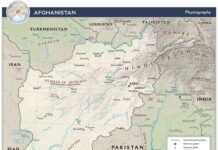Context

After years of sectarian bloodshed between Shia and Sunni tribes of Kurram tribal district, the warring sides have reached a peace agreement. Shia and Sunni rival militants have agreed not to attack each other, to include personnel and property. Additionally, the entire tribal agency of Kurram would be opened up for free movement of people and goods. However, the deals impact on US-Pakistan relations and US Afghan Strategy is going to be far less promising. This article examines the implications of just reached Kurram peace deal.
militants have agreed not to attack each other, to include personnel and property. Additionally, the entire tribal agency of Kurram would be opened up for free movement of people and goods. However, the deals impact on US-Pakistan relations and US Afghan Strategy is going to be far less promising. This article examines the implications of just reached Kurram peace deal.
Analysis
Conflict in Kurram has led to internal displacement of hundred and thousands, who had to leave their homes, lands and properties at the mercy of the antagonists. Shias and Sunnis in Kurram Agency have carved up their respective strongholds in different areas. Due to detriorating situation, they are compelled to move to localities and communities where their particular sect has a majority and control.
A huge number of families left the district altogether to escape death and destruction. An estimated 3,000 have died and more than 3,400 seriously injured in sectarian clashes between Shias and Sunnis. These clashes have been taking place between Shia majority population of Kurram tribal district and the extremely anti-Shia, Taliban and Al Qaeda fighters backed by local Sunnis.
What Led To The Peace Agreement
Both warring sides needed the peace agreement in Kurram. On the one hand, the blockade of roads created obstacles for the Shia population to leave the area, while at the same time, making it difficult for the Sunnis to move into the Kurram Valley. This situation pressured the Shia community members to negotiate peace with Taliban and Al Qaeda.
Facing considerable pressure in North and South Waziristan, TTP and Al Qaeda needed space to maneuver and launch attacks in Afghanistan. Kurram could provide this space if the endless fighting there ended. This caused them to support the local Sunni community and hold talks with Shias through a tribal jirga.
Groups And Individuals Involved In Negotiations
There have been media reports, which appear to be credible to a certain extent, on the instrumental role of Siraj and Khalil Haqqani in bringing about this peace deal. Some observers are of the view that the support of Haqqani network actually made peace possible in Kurram, and it prevailed over TTP to support the process.
The head of TTP in Kurram Agency, Fazal Saeed, held a press conference after the agreement and has vowed to extend all-out support to the government and security forces to implement the peace agreement reached between elders of the Sunni and Shia sects. Saeed also stated that militants would hand down severe punishment under the Shariah if any party flouted the peace deal. Saeed asked the Shias to use roads including the Thall-Parachinar Road without any fear as the TTP was not against the peace deal. With TTP extending support to peace in Kurram, the cessation of hostilities between the warring parties is expected to last.
For the purpose of restoring peace to Kurram, a 220 member tribal jirga led the negotiation and conciliation process. The jirga was headed by former federal minister, Malik Waris Khan Afridi of Khyber Agency. Member of National Assembly Sajid Toori from Parachinar and Member of National Assembly Muneer Orakzai, also played leading roles to bring the two sides to the negotiation table. The tribal jirga had the full backing of Pakistan government.
Implications Of The Kurram Peace Deal
The peace deal in Kurram could have the following implications:
- It can be safely assumed that Shia leaders have agreed to remain indifferent to Al Qaeda and Taliban activities in Kurram, and have in return received assurances that they would no longer be attacked, and their blockade would be lifted. One of the key provisions of the agreement is regarding the opening up of Thall-Parachinar road that has remained closed for the last 4 years.
- Attacks on US and NATO forces in Afghanistan are likely to increase as a result of the agreement in Kurram and would complicate the US strategy to gain an upper hand over Taliban. Thus, the truce would be unacceptable to Coalition Forces involved in combat there.
- It is almost certain that the peace deal is going to further deteriorate the US-Pakistan relations, which are already stressed since the Raymond Davis incident in Lahore. The tripartite talks to be held this month between Pakistan, Afghanistan, and US have already been postponed. It is believed to be the first retaliatory action taken by US. It should also be noted that the September 30th, 2010 NATO helicopter attack in Kurram took place only a few days after rumors had surfaced regarding peace talks in Kurram Agency. That helicopter attack eventually led to the temporary closure of the key supply lines for NATO forces in Afghanistan
- The last time Pakistan got involved in peace deals with Taliban in Waziristan and Swat, the outcome resulted in strengthening the grip of extremists. The Pakistan government must have ensured some conditionality, through the participation of Afghan Taliban, to prevent history repeating itself in Kurram and to counter international criticism.



